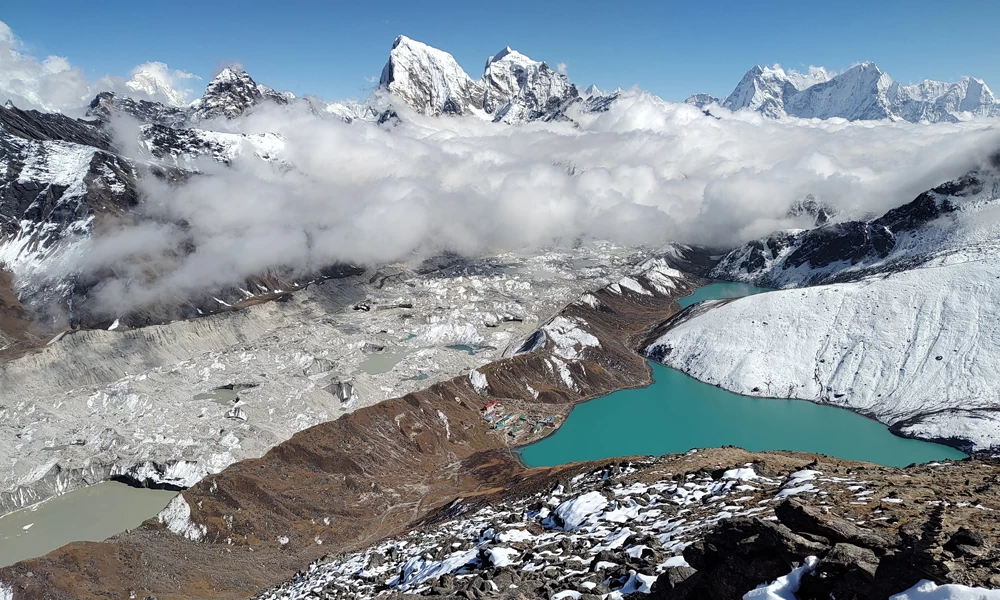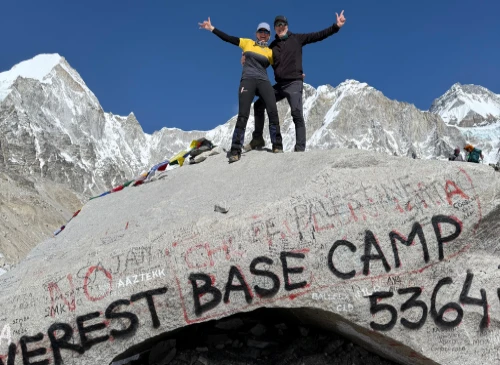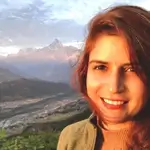The Everest Hiking Trip Package, or Sherpa Village Trek, is a short but full escape to the Khumbu area. This trek begins in Lukla and ends at the breathtaking Namche Bazaar, situated at an altitude of 3,440 m, providing a glimpse of the Everest region. This trek is the perfect solution for those who do not wish to take on the full Everest Base Camp Trek or the quite demanding Kala Pattar Trek, but still want to see what this region of Nepal has to offer in terms of natural grandeur and the famous Sherpa hospitality!
The trek is in Sagarmatha National Park, a beautiful area full of unique plant and animal species. As we know, the Yeti is still alive, but for lovers of fauna and flora, those sauna steam baths are a great chance to enjoy the view of Mount Everest and three more of the world's highest mountain ranges!
We then walk alongside the river known as Dudh Koshi, which translates to "milk river," through spacious fields and picturesque villages before meeting the main trail of the Everest Short Hiking Trail at Lukla. It passes through valleys, intensive green forests infested with rhododendrons from March to April, blue pine, and fir, among other things. Hiking will also take you through typical Sherpa settlements and ancient Buddhist temples and monasteries that bring you to the entry point of Sagarmatha, as well as the energy this magnificent realm of Everest boasts.
Exploring the Everest Hiking Trip
The Everest Hiking Trip starts with the most adventurous and thrilling flight to Lukla from Kathmandu, which takes about 45 minutes and offers a close view of the Himalayas. Lukla, an active airport and landing strip for the Everest zone, is where one begins the trekking experience. Sagarmatha National Park: The trail first gradually declines through lovely Sherpa settlements along the steep gorge of the Dudh Koshi River up to the Phakding village, where most trekkers spend a day acclimatizing.
The trek proceeds to Namche Bazaar, situated at 3,440 m, through a pine and rhododendron forest full of animals and birds. Namche Bazaar, the colorful Sherpa capital, is the starting point for most climbers attempting to reach the world's top. Climbing through the traditional villages, one comes to Namche, a comparatively large village with painted buildings and facilities that contrast quite a bit with the surrounding natural area.
Namche Bazaar is the best place for trekkers to spend a full day resting to reduce the effects of acute mountain sickness. The next highlight of this trek is the Hotel Everest View, renowned for offering the best view of both Mount Everest and Ama Dablam Peak. You will etch this bizarre backdrop deep in your memory, especially after experiencing the dramatic mountain scenery.
From Hotel Everest View, you will return to Namche, and from there, you will go to Lukla, passing through Khumjung, the largest Sherpa valley in the Everest region. Exploring the region begins with Khumjung, and remaining with the community provides a genuine feel for the Sherpas' life and traditions. Some sites of interest in this region include yak grazing, monasteries, Hillary School, and the Sherpas' high culture display.
Finally, on the last day of the trek to Lukla, one will be able to witness the beauty of painted houses in the Khumbu villages before leaving the mountains. After a week-long journey through some of the most magnificent terrains on earth, you can take a flight back to Kathmandu, where you can enjoy stunning views of the mountain range once again. Though this ‘Everest Hiking Trip’ is short, it endows a lasting impression of Nepal’s natural and cultural aspects, especially of the Khumbu region.
Best season for the Everest Hiking Trip
The appropriate times to undertake the Everest Hiking Trip are during the spring season, which lasts from March to May, and the autumn season, from September to November. Here's why these periods are ideal: Here's why these periods are ideal:
Spring (March to May): This is the most preferred season for trekking in the Himal region, including the Everest region. As for climate conditions, most of the time the skies are clear and the temperature is relatively high. This season offers a stunning view of the mountains and colored rhododendrons, adding to the colorful scenery. This season is also ideal for acclimatization to any activity and for preventing severe frost conditions.
Autumn, which spans from September to November, is a highly favorable season for trekking activities. The weather is good and is cool most of the time, and the views of the mountains are normally very pleasant. The chilly weather is still pretty much bearable, and the trails are not as congested as they are during the spring season. This period is also good because one can avoid the monsoons that can make the trail conditions slippery and difficult.
Autumn and spring are the ideal seasons for trekking, as they offer minimal risk to trekkers and provide stunning views of the Everest region.






